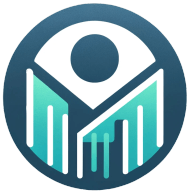What Innovative Tools Or Software Have Improved Your Financial Reporting?
In the ever-evolving world of finance, five professionals including Presidents and Finance Managers have shared their insights on innovative tools that have revolutionized their financial reporting. From the integration of Streamlined Budgeting with Adaptive Insights to the transformative power of Fathom in creating visual reports, these experts reveal how new software solutions have enhanced their workflow.
- Streamlined Budgeting with Adaptive Insights
- Enhanced Decision-Making with Predictive Analytics
- Real-Time Insights Using Power BI
- Agicap for Dual Accounting and Cash Flow
- Fathom Transforms Data into Visual Reports
Streamlined Budgeting with Adaptive Insights
I've found that it is quite important to maintain proper and efficient financial reporting in our operations. Using Adaptive Insights in our financial reporting has streamlined our budgeting and forecasting processes. This tool has allowed us to move from burdensome spreadsheets to a cloud-based system that is much more dynamic, significantly reducing manual entry errors and thereby improving the accuracy of financial projections.
The tool generates real-time reports to tailor budgets and forecast changes in the market. After implementing Adaptive Insights, we have observed a 30% reduction in the time taken to complete financial reporting tasks. This means that our finance team now has more time to concentrate on strategic analysis rather than the burden of administrative tasks. Efficiency gains have further allowed us to make decisions in a more time-sensitive manner, based on data, hence leading to better financial planning and resource allocation across the company.

Enhanced Decision-Making with Predictive Analytics
Predictive analytics software is now a crucial tool in our financial reporting. By using historical data and machine-learning algorithms, we recognize patterns, predict future outcomes, and discover hidden trends. Our ability to make decisions based on data and address risks beforehand has drastically improved. For example, by foreseeing changes in income, we can improve the allocation of resources and management of inventory. Furthermore, predictive analytics has improved our financial planning and budgeting procedures, resulting in more precise predictions and better financial results.

Real-Time Insights Using Power BI
I integrated Power BI into my financial reporting, which has significantly streamlined my workflow. Power BI's real-time data visualization and interactive dashboards allow for quicker insights and easier data manipulation. This tool has enhanced my ability to generate detailed reports and share actionable insights with stakeholders efficiently, reducing the time spent on manual data processing.

Agicap for Dual Accounting and Cash Flow
One piece of software that we expect to really have an influence on us is Agicap. Agicap is a cash-flow forecasting software that links up to a company's accounting feeds, can integrate budget information from multiple sources, and has a helpful interface for categorizing transactions. For management-level review, the graphs and reporting provided are clear, colorful, and provide an excellent level of detail.
Although companies have many options when it comes to their accrual-based accounting reporting and forecasting, cash-flow forecasting is an emerging use case for software. Cash-flow forecasting needs cannot easily be met through the current accounting solutions. The ability to manage a company's books on an accrual basis for accounting and a cash basis for cash at the same time cannot be underestimated in times of both growth and recession.

Fathom Transforms Data into Visual Reports
Recently, I integrated a tool called Fathom into my financial reporting process, and it's been a total game-changer. Fathom takes financial data from platforms like Xero or QuickBooks and turns it into insightful reports and visualizations.
What's innovative about Fathom is how it allows me to dig deeper into the financial health of my investments with just a few clicks. Instead of sifting through spreadsheets, I can quickly identify trends, forecast future performance, and even run scenario planning. It's drastically improved how I communicate financial insights to my clients and stakeholders—they can see complex data presented in a way that's easy to understand and actionable. It's taken a lot of the guesswork out of financial analysis, which not only saves time but also leads to more informed decision-making.


